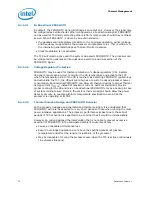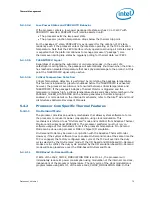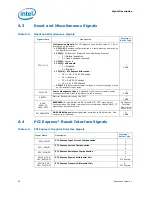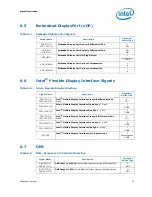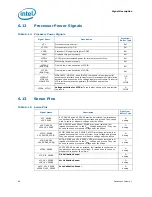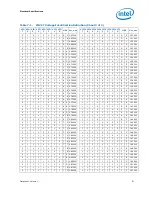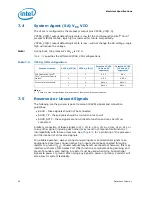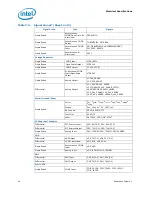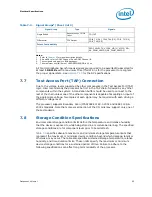
Electrical Specifications
88
Datasheet, Volume 1
7.3
Voltage Identification (VID)
The VID specifications for the processor V
CC
and V
AXG
are defined by the
VR12/IMVP7
SVID Protocol
. The processor
uses three signals for the serial voltage identification
interface to support automatic selection of voltages.
specifies the voltage
level corresponding to the eight bit VID value transmitted over serial VID. A ‘1’ in this
table refers to a high voltage level and a ‘0’ refers to a low voltage level. If the voltage
regulation circuit cannot supply the voltage that is requested, the voltage regulator
must disable itself. See the
VR12/IMVP7 SVID Protocol
for further details. The VID
codes will change due to temperature and/or current load changes in order to minimize
the power of the part. A voltage range is provided in
. The specifications are
set so that one voltage regulator can operate with all supported frequencies.
Individual processor VID values may be set during manufacturing so that two devices
at the same core frequency may have different default VID settings. This is shown in
the VID range values in
. The processor
provides the ability to operate while
transitioning to an adjacent VID and its associated voltage. This will represent a DC
shift in the loadline.
Note:
Transitions above the maximum specified VID are not permitted.
includes VID
step sizes and DC shift ranges. Minimum and maximum voltages must be maintained.
The VR used must be capable of regulating its output to the value defined by the new
VID values issued. DC specifications for dynamic VID transitions are included in
and
. See the
VR12/IMVP7 SVID Protocol
for further details.

